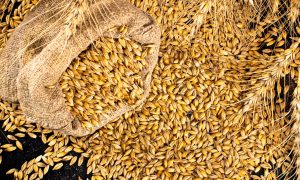Regenerative agriculture: The future of India’s cultivation practices

India’s Green Revolution boosted food security but harmed soil, water, and crop diversity. Regenerative agriculture offers a sustainable alternative, restoring ecosystems while boosting yields and incomes. Tech, policy support, and carbon credits can drive adoption. Global momentum and government schemes align with this shift. With collaboration and innovation, India can lead in climate-resilient, nutrition-rich, sustainable farming.
The Green Revolution marked a turning point in India’s agricultural history, helping the country overcome food scarcity and achieve self-sufficiency. However, its heavy reliance on chemical inputs, mono-cropping, and irrigation-intensive methods also resulted in unintended consequences—soil degradation, groundwater depletion, and the erosion of indigenous crop diversity.
Over time, these issues, along with shifting market dynamics and dietary patterns, led to the loss of over 100,000 traditional crop varieties, threatening biodiversity and nutrition security. Indigenous crops like Kattuyanam rice, Poongar rice, and Kuzhiyadichan rice are now near extinction. Their revival is essential to preserve biodiversity and tackle rising nutritional deficiencies in the population.
Regenerative agriculture – A timely necessity
With India’s population expected to reach 166.8 crore by 2050, a critical question arises: Can we restore ecological health while ensuring food security?
A promising answer lies in regenerative agriculture—a holistic, outcome-based farming system focused on restoring, not depleting, natural resources. Unlike conventional practices, regenerative agriculture improves soil fertility, boosts water retention, and enhances biodiversity, all while delivering strong yields. Key practices include reducing soil disturbance, maintaining year-round soil cover, retaining living roots, intercropping, agroforestry, and integrating livestock to enhance nutrient cycling.
Regenerative farming is also a vital climate solution. According to the IPCC, agriculture, forestry and land use contribute around 22 per cent of global greenhouse gas emissions, largely due to deforestation and chemical-intensive farming. Regenerative practices could potentially sequester up to 23 gigatonnes of CO₂ by 2050, according to the World Economic Forum (WEF).
Moreover, a 1 per cent increase in soil organic matter in 0.4 hectares can improve water storage capacity by 75,000 litres (Observer Research Foundation)—a game-changer in a country where agriculture consumes over 80 per cent of freshwater.
Technology as a scaling enabler
While regenerative practices are effective, scaling them across India’s diverse agricultural landscape demands tech-enabled precision. Tools such as AI, IoT, remote sensing, and Variable Rate Technology (VRT) support data-driven decisions, optimise input usage, and enhance soil and crop health.
In Telangana, an AI-powered initiative helped chilli farmers increase yields by 21 per cent and reduce pesticide use by 9 per cent, according to the WEF. In India’s multilingual setting, tech platforms can also help overcome language barriers, enabling inclusive knowledge dissemination and wider adoption.
With accurate, real-time data, farmers can adopt low-carbon, resource-efficient farming systems that marry traditional wisdom with modern science.
Global corporate momentum
Regenerative agriculture is gaining ground globally, especially among FMCG giants, integrating it into their sourcing strategies. One leading food company aims to source 50 per cent of its key ingredients from regenerative practices by 2030. Another is applying regenerative farming across 7 million acres worldwide.These efforts are yielding tangible results. In Spain, regenerative methods helped a drought-affected farm avoid 40 per cent yield loss. In the U.., farms are using AI-based irrigation systems, robotic weeders, and IoT solutions to reduce chemical dependency and improve soil integrity.
Financial viability and carbon credit potential
Regenerative agriculture is not just ecologically sound—it’s economically promising. A Deloitte study found that increasing climate-smart farming by 20 per cent in the EU could boost farmer incomes by €9.3 billion annually. In India, regenerative methods offer an emerging revenue stream through carbon credits. The Uttar Pradesh government’s agroforestry initiative, for example, is expected to generate 4.5 million carbon credits, valued at approximately ₹230 crore.
These developments show that regenerative agriculture can support farmer incomes while helping meet sustainability goals.
How India can scale adoption
Despite its promise, adoption of regenerative practices faces roadblocks—high transition costs, low awareness, and limited market access. But the groundwork is in place. Government schemes such as the Pradhan Mantri Krishi Sinchayee Yojana (PMKSY) and Paramparagat Krishi Vikas Yojana (PKVY) reflect an increasing commitment to sustainable farming.
India needs a multi-pronged strategy: boost farmer education, incentivise early adopters, create premium markets for regenerative produce, and invest in digital infrastructure. Collaboration between policymakers, researchers, private sector, and grassroots institutions will be key.
The path forward
Regenerative agriculture isn’t a panacea—but it offers a practical, scalable pathway to restore soil health, increase climate resilience, and safeguard nutrition security. Its success will depend on how effectively India can align technology, policy, and local wisdom.
If nurtured well, regenerative agriculture can position India as a global leader in sustainable farming, offering a future where productivity and ecological balance go hand in hand. The time to regenerate is now.
To Read more about Rice News continue reading Agriinsite.com
Source : The Hindu Business line

















